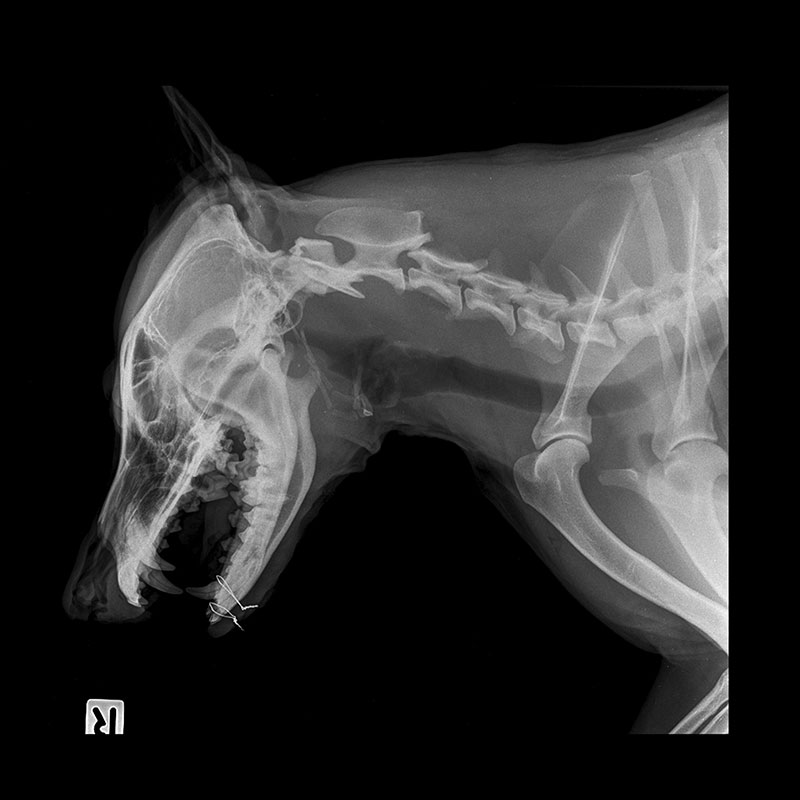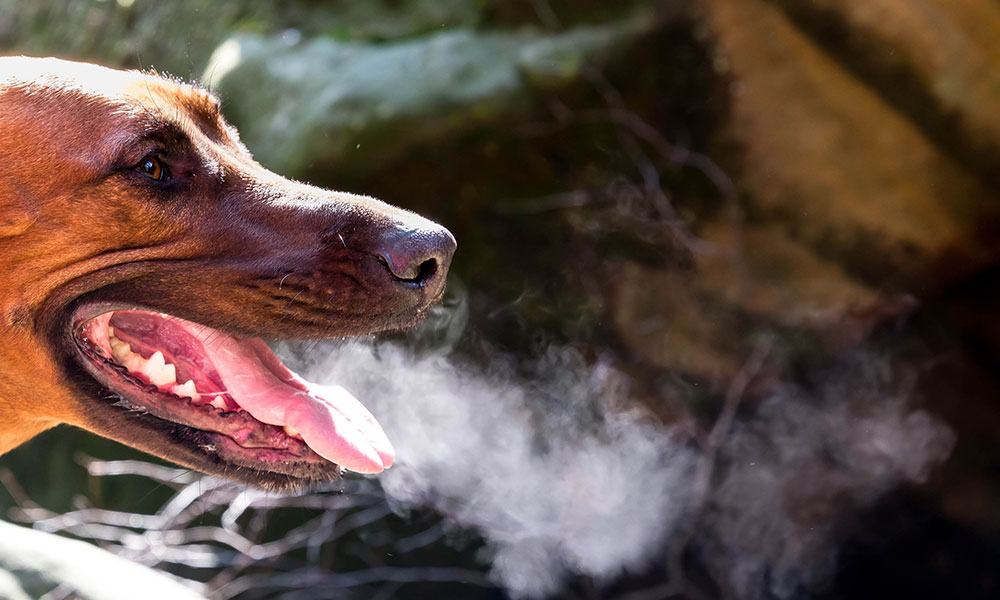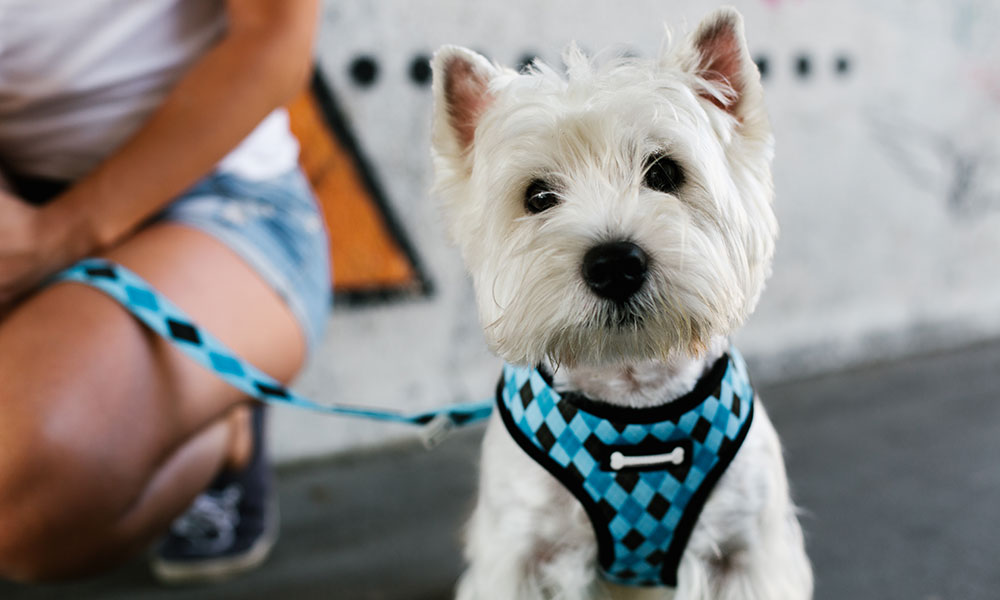Have you ever owned or known someone who’s owned a vacuum cleaner? Unless you have been around linoleum and hardwood floors your entire life, the odds are pretty good that you have. Believe it or not, that vacuum cleaner hose is actually a perfect representation of what the trachea, or windpipe, is. Whether it’s your or your dog’s, it’s basically the same design. The trachea is a series of flesh and cartilage that is arranged in a c-shape, with the opening of the “c” pointing towards the back. When everything is working properly, it is a durable and reliable piece of biological hardware. The trachea is a vital apparatus in the body. It transports air from the nose and mouth to the lungs. Our dogs, literally, cannot live without it. Like a vacuum cleaner though, sometimes things break down. In this article, we will explore what a collapsing trachea in dogs is, its symptoms, how to treat it and answer any further questions you may have.

What Is A Collapsing Trachea?

A collapsing trachea is pretty self explanatory. Like we laid out above, the trachea is built with a stack of small cartilage rings in the shape of a “C”. When that cartilage is damaged or decayed, the rings tighten, reduce in size or collapse. Restricting the airflow to the lungs leads to serious difficulty breathing and in more severe cases, even death. To make matters worse, the condition itself seems to be completely our (humanities) fault.
Before humans began the practice of domestication with wolves into today’s version of household pets, they were actually a rather different animal. Pre-domestication, a wolf on the smaller to medium side of things would average about 40-50 pounds. By today’s standards, that’s a relatively medium to large sized pooch. Due to domestication and the rise in popularity of “designer dogs” we have inbred (yes inbred) them down to a pocket or purse sized version of their ancestors. Which is what brings us back to this being all our fault. A collapsed trachea in dogs is more common in those aforementioned smaller breeds.
Breeds Commonly Affected

You won’t see many, (though it is still possible), Great Danes that suffer from a collapsed or collapsing trachea because this affliction is more geared towards dogs on the smaller side of the size spectrum. The reason being that the dog’s trachea is often underdeveloped. This underdeveloped and weakened trachea will be more prone to a collapse in the future. While a tracheal collapse in dogs can affect any dog breed, it is most commonly found in breeds like Chihuahuas, Pomeranian, Shih Tzu’s, Lhasa Apsos, Toy Poodles and Yorkshire Terriers.
Symptoms of a Collapsed Trachea

Picture that vacuum cleaner hose we mentioned earlier and imagine that as you’re trying to clean the carpets of your home, someone is slowly squeezing the hose shut. You wouldn’t need to see the culprit squeezing the hose to know that something was wrong with the machine. The airflow would be restricted and you’d hear the vacuum cleaner begin to struggle to do its job. Now imagine that is your dog trying to breathe. In a minor case a dog will be able to struggle through getting breaths in during a tracheal collapse. This will always present itself as a cough in your dog. Sometimes accompanied by a “honking” sound. Do not confuse that honking sound with kennel cough as the two ailments are different.
The difficulty breathing and honking cough will be more prominent after any type of physical activity. The way the trachea works is through positive and negative pressure. Unlike humans, dogs regulate their body temperature through panting or breathing. When your dog is engaging in a more physically strenuous activity, they will begin to breathe harder, exacerbating the symptom of difficulty breathing. This symptom of tracheal collapse in dogs can also happen when too much pressure is applied to their collar. The collar is in direct contact with the trachea and any added pressure or restriction will cause the symptoms to get worse. A way that your vet will determine if your dog is suffering from a trachea collapse will be to gently stimulate the trachea with a gentle pet.
Treatment

There are a few different ways that a collapsed trachea can be handled for your dog. In lighter cases of a collapsed or collapsing trachea, cough suppressants could be prescribed. Unfortunately, it’s not as simple as giving fido a tablespoon of Buckleys, they’ll be prescribed bronchodilating medications which can assist with breathing by relaxing the muscles to open the airway.
In more severe cases of tracheal collapse in dogs, surgery may be required. Medical advancements in veterinary science have come very far over the past 10 years. Splints, artificial windpipes and more are always options on the table for severe cases of a collapsed trachea in dogs, but are often difficult and expensive. If that is a route that owners wish to explore, a board-certified veterinary surgeon will be assigned to the surgery.
Surgeries and specialized surgeons can rack up an impressive veterinarian bill, however. In many cases owners will seek out home treatments for their dogs’ collapsed trachea. While they aren’t always as successful as tracheal surgery, they can make huge improvements to your dog’s quality of life. Simple solutions like reducing their activity and adjusting playtime to accommodate their ailment can make a difference in how often your pooch will have to take a breather (no pun intended) before continuing. Another way to reduce the amount of pressure put on the windpipe is to switch from a neck base collar to a harness. A big contributing factor to difficulty breathing is the constant tug on the neck that traditional collars offer. Removing that obstruction will allow your dog to move more freely without the added restriction on the windpipe.
Another way to help your dog’s collapsed trachea from home is to monitor and change their diet. A difficulty breathing and pressure on the trachea can be caused by obesity. Scheduling in a light exercise session, paired with an alteration to their diet can help them to lose weight and decrease any excess stress to their breathing. By taking one or more of those simple steps, you should see a significant improvement in your dog’s overall quality of life. Pairing those techniques with the introduction of CBD oil for dogs to help manage their stress and pain is a great way to manage the symptoms of tracheal collapse in dogs as well.
Conclusion

Unfortunately there are many ailments that you will likely encounter throughout your time as a pet owner. If you’re a small dog owner, the likelihood of you encountering a collapsed trachea in your dog are quite a bit higher than if you own a larger breed. At the end of the day, it all comes down to your preparedness. Always remember to schedule a vet appointment whenever you notice something that may be causing discomfort in your dog. Encourage exercise and feed them a healthy diet to ensure the quality of life is as high as it can be. You are never going to be able to ensure that your best friend fido lives a completely unproblematic life, but you can take steps to ensure they are as healthy as possible. While a collapsed trachea in dogs is a serious affliction, it can be managed and in most cases they can live with it. It will just take additional support and care on your part, but you already know that.
Frequently Asked Questions (FAQ)
What can be done for a dog with a collapsing trachea?
Dogs with a collapsed or collapsing trachea can be helped by reducing the intensity of their exercise and by losing weight. There is no way to slow the collapse of your dog’s trachea so the best owners can do is adapt to make their lives easier.
Is tracheal collapse in dogs fatal?
In more serious cases, tracheal collapse in dogs can be fatal. The restriction of the airways can make it hard to breathe and in the cases of a total collapse, hinder breathing entirely.
What are the symptoms of tracheal collapse in dogs?
Coughing, wheezing and a recognizable ‘honkin’ sound are a few signs that your dog may be suffering from a tracheal collapse.
Does a collapsed trachea get worse?
If steps are not taken to improve your dogs health and reduce the amount of stress on their windpipe, a collapsed trachea can become worse over time.
What helps a dog with a collapsed trachea?
Exercise, a change in diet to reduce weight and swapping out a traditional neck-based collar for a harness are a few ways you can help a dog with a collapsed trachea.
How long do dogs live with a collapsed trachea?
The length of time a dog can live with a collapsed trachea is completely dependent on the steps taken to ease the stress on it. In most cases, the average lifespan of a dog after a tracheal collapse is 2 years. They can 4 or more years with special care and attention.
Want to Learn More?
Download our AILMENT GUIDE NOW.
PLUS! all FIRST TIME buyers get 50% off their additional order. Visit verlota.com to get your discount code.





